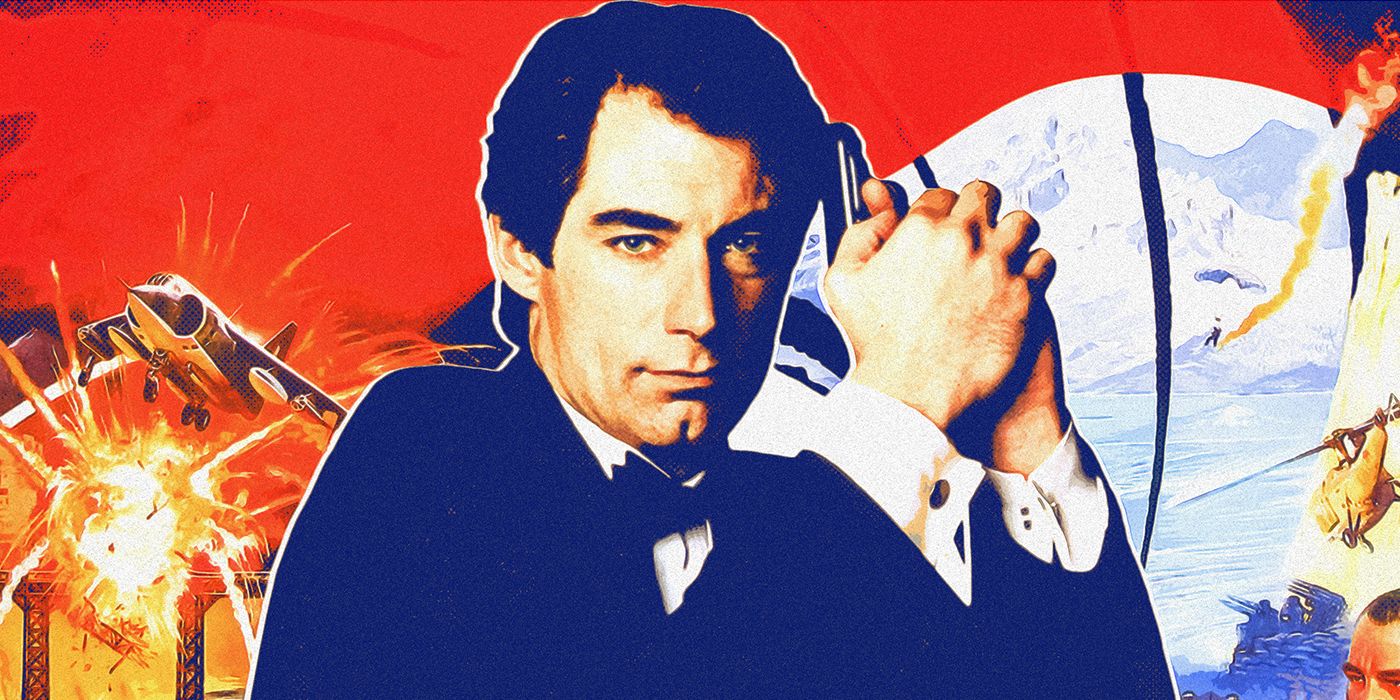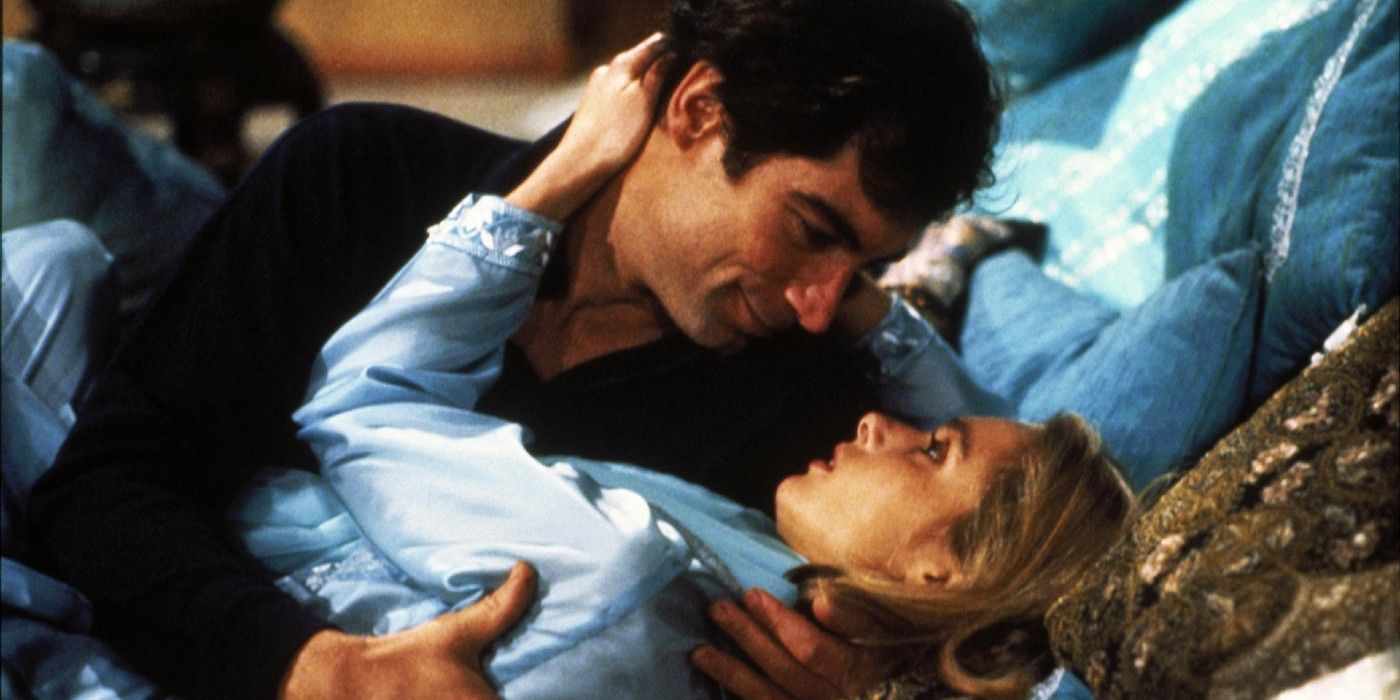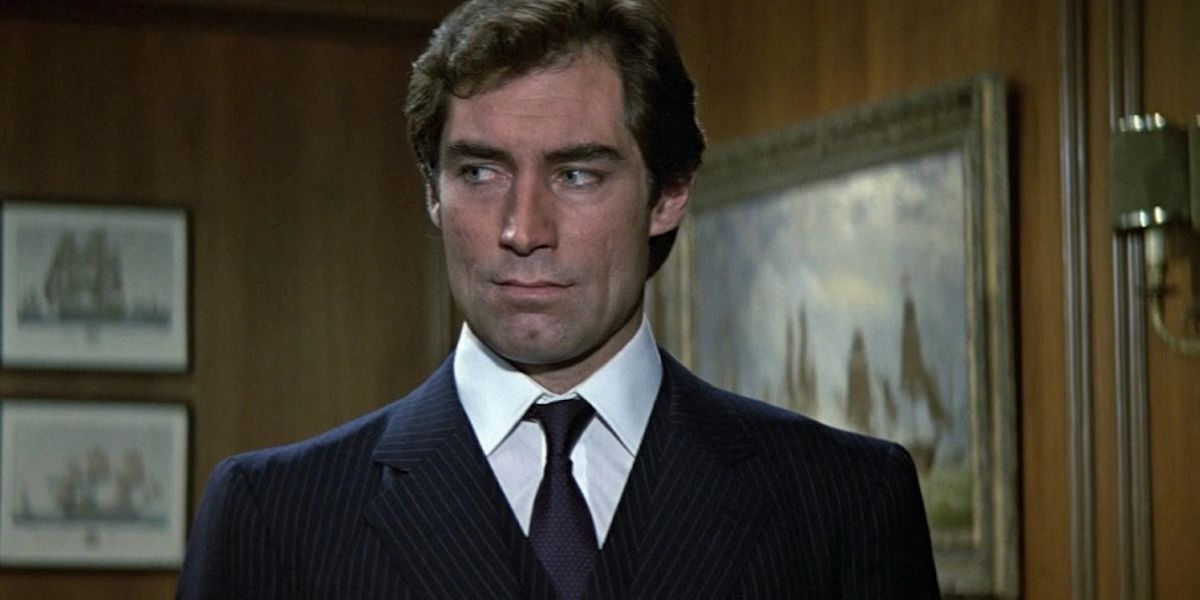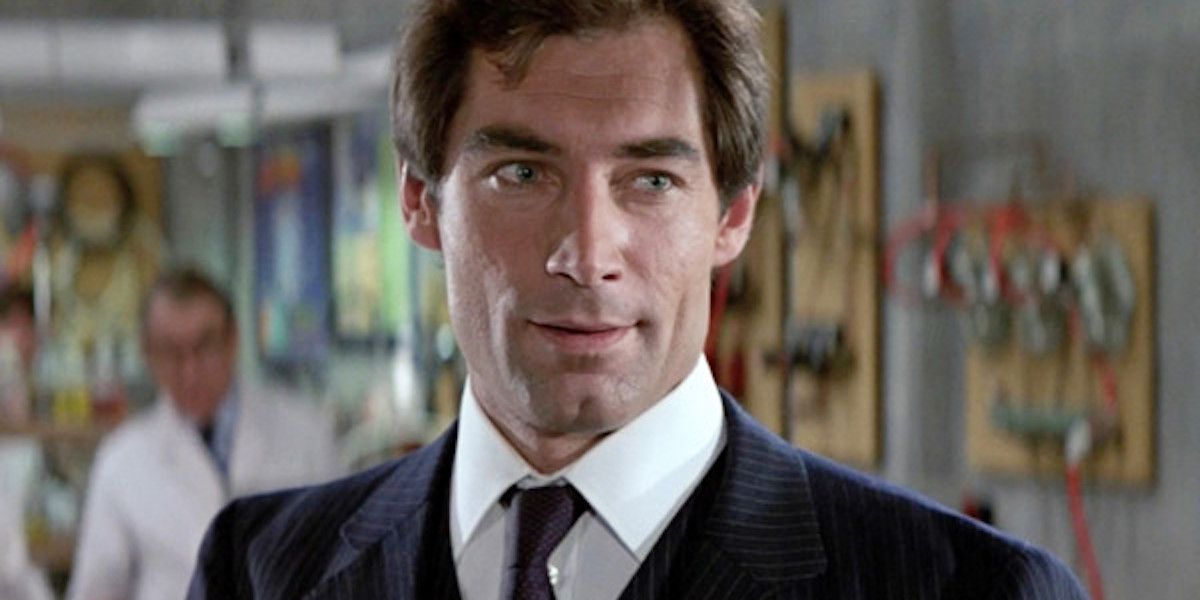“Forget the ladies for once, Bond,” an MI6 contact in The Living Daylights chides 007 (Timothy Dalton) for showing more interest in a female cellist than the defection of a Soviet general. It could have been the mantra for a production which, along with the replacement of Roger Moore as Bond, aimed to focus on espionage rather than bed-hopping shenanigans. While Goldeneye and Casino Royale get more kudos for their much-needed reinventions of the franchise, 1987’s The Living Daylights is an equally important course correction – one that showed Bond could be more than an anachronism and paved the way for later successes.
After a stellar pre-credits scene on the Rock of Gibraltar, Bond is in Czechoslovakia, protecting General Koskov (Jeroen Krabbé) from a KGB sniper as he flees to the West. When the defection turns out to be a charade, Bond enlists Kara Milovy (Maryam D’Abo) to help track him down. After teaming up with the Mujahedin in Afghanistan, Bond confronts Koskov and a corrupt American arms dealer, Brad Whitaker (Joe Don Baker).
The ending of one actor’s period as Bond is generally commemorated by a sub-par entry in the series, with only Daniel Craig’s Die Another Day bucking the trend. Pierce Brosnan bowed out with the tonally confused Tomorrow Never Dies. Sean Connery should have called it a day with You Only Live Twice, but returned for two more average Bonds in Diamonds Are Forever and (the non-Eon produced) Never Say Never Again. Roger Moore’s 1985 swansong, A View to a Kill, is the worst of the bunch, although the rot had set in when 007 wore quasi-futuristic clothes into space for Moonraker. The series had focused on comedy as much as action for a decade and was looking old-fashioned compared to the excitement of new franchises like Indiana Jones.
If the Connery years retain a sheen of antiquated 60s cool, then revisiting the Moore films can be a shock. Aside from an attempt at something more grounded in For Your Eyes Only, Moore’s tenure is marked by increasing absurdity. They were regarded as family-friendly diversions at the time, although in retrospect they’re problematic at best. In these films Bond looks like a product of Britain’s post-colonial anxiety, striding around foreign destinations in a white suit, beating up locals, and having lots of sex. The Spy Who Loved Me is the only time it all comes together well, with the unsavory elements offset by brilliant action sequences at a time when Moore was still young enough to convince as Bond. At the beginning of that film, 007’s seemingly endless base jump culminates with the opening of a Union Jack parachute that is simultaneously rousing and delusional.
There was no doubt in 1987 that filmgoers were ready for someone new to play Bond. Dalton had been approached as early as On Her Majesty’s Secret Service although turned the part down, believing himself too young and Connery too hard an act to follow. This wasn’t the case by the time of The Living Daylights. Moore’s age had become part of the joke in A View to a Kill, with stunt doubles doing practically everything (from hanging off vehicles to running up steps). Teaming him with the even more senior Patrick Macnee helped, although Moore looked ridiculous alongside female actors half his age.
Another element that was behind the times was Bond’s attitude to sex. AIDS was a massive concern in the mid-80s, with the British government running a health campaign warning the public “don’t die of ignorance.” There was an increasing pragmatism about sex education and in 1986 the first advert for condoms appeared on British TV. There were howls of disapproval from the conservative voices of society, but change had come and suddenly the Bond’s promiscuity looked as dated as a pair of flared tuxedo pants. There’s a prurience to the older Bond films, presenting promiscuity both as a mark of virility and a joke through incessant double entendre. 007 has sex with four different partners in A View to a Kill alone, the highest rate of “keeping the British end up” in any of Moore’s films. With changed priorities, much was made in the press that Dalton’s Bond would only have sex with one person in The Living Daylights (not counting an implied liaison on a super yacht) – an innovation that brought him more in line with other 80s heroes who were happy to focus on just one partner per movie.
Accordingly, Dalton’s Bond is straight down to the business of espionage once he gets behind the Iron Curtain in Czechoslovakia. There’s a grubby realism to scenes of Bond setting up his sniper’s nest in a back room and checking out a clue in a public toilet. The set-up with the sniper is a reminder that behind all the gloss, 007 is a government-sanctioned killer. He still gets some cool gadgets from Q (Desmond Llewelyn), particularly his Aston Martin Vantage, although a tuxedo jacket that doubles as night camouflage is the most practical tool. Dalton’s hero is surly and argumentative, refusing to follow orders from his uptight agency contact. Years before Daniel Craig in Casino Royale, he’s the most insubordinate Bond, exasperated by the stupidity of his superiors and more than happy to be sacked.
The comparison to Casino Royale extends to Bond’s relationship with Kara, which is more than the perfunctory love interest of many films in the series. The middle part of the film devotes time to Bond pretending to be an ally of Koskov to get information, although the pair inevitably fall for one another. Truer to Ian Fleming’s novels, often equal parts spy thriller and romance, there are elements of comedy and genuine connection between the two characters. The romantic scenes are nicely balanced with the action, and The Living Daylights has one of the most inventive and funny car chases in the series – Bond’s Aston Martin cuts a Lada in half with a laser and then takes to the ice to escape the Russian army.
If things get a bit confused once Bond end up in Afghanistan, that’s probably a reflection of the times. Allying with the Mujahedin was an honest-to-goodness 80s action movie cliché (fans of The Boys will expect Soldier Boy to appear at any moment). With the heroin and arms dealing, The Living Daylights at least suggests the relationship is compromising. After a lot of running back and forth on a Soviet air force base, the film has its best scene as Bond fights Koskov’s henchman, Necros (Andreas Wisniewski), on a Hercules transport. With two stuntmen hanging off the back of the plane from a cargo net, it’s the type of truly dangerous spectacle that the Bond movies do best.
Throughout it all, Dalton is assured as 007, convincing as both a veteran spy and a romantic lead. The film feels like it’s from a different age to the last Moore movie, helped by Dalton’s age appropriateness and physicality. He’s no Tom Cruise (who would be hanging off the back of the Hercules for real), but he does his own running and jumping at least. A few hold-overs from earlier films, such as some casual workplace harassment with Moneypenny (Caroline Bliss) and the jarring decision to make Bond a smoker again, are reminders this is still the 80s. D’abo is empathetic and smart as Kara in the first half of the movie, but in the later action scenes she’s left standing around too often. The weaker second half of the film is a reminder of how successful Casino Royale was in sticking with its romantic storyline.
The Living Daylights isn't always well-served by its villains either. While Krabbe is appropriately slimy as Koskov, it's unclear what he wants: guns, money, or just a promotion in the KGB? At least A View to a Kill’s Max Zorin (Christopher Walken) had clear life goals in wanting to blow up Silicon Valley. However, Necros is a kick-ass henchman. He has one of the best hand-to-hand combat scenes in the pre-Craig era when he fights a butler at the MI6 safe house. It’s one of the film’s coolest ideas that even the British household staff are special forces killers, with bonus points for spotting the parrot that chatted up Margaret Thatcher (Janet Brown) at the end of For Your Eyes Only.
Joe Don Baker’s Whitaker, a self-styled military man who flunked out of West Point, is also a disappointment. Aside from a final gun battle with Bond (a letdown after the spectacular Hercules fight), he doesn’t have much to do in the movie apart from bankroll Koskov and act like a pretentious fool. A veteran actor, Baker was no doubt included due to the popularity of the thriller Edge of Darkness, one of the BBC’s greatest achievements that made the name of Goldeneye and Casino Royale director Martin Campbell. Baker reappeared as a CIA agent in Goldeneye and Tomorrow Never Dies, part of the (sometimes confusing) Bond tradition of reusing actors in different roles. Another BBC star of the time, Julie T Wallace of The Life and Loves of a She-Devil, gives a scene-stealing turn as a Bond ally that makes you wish she’d been cast as Kara.
Reaction to Dalton’s debut as Bond was mixed at the time, with praise for the more serious tone but disappointment at the lack of humor. His next outing as Bond, Licence to Kill, doubled down on the seriousness but to lesser effect. Set mainly in the US and Mexico, it had the plot and feel of an American action movie rather than a Bond entry, subtly emphasized by the choice of Lethal Weapon’s Michael Kamen to score. (Regular composer, John Barry, had sworn off Bond movies, miffed at being made to work with the likes of Duran Duran and a-ha rather than Shirley Bassey.) Considered a misfire, it ended Dalton’s tenure and put 007 on extended leave until Goldeneye in 1995. Looking back, it’s a shame that Dalton’s portrayal from The Living Daylights wasn’t given more opportunity, especially given the changing times. He’s serious but compelling, more Craig than Brosnan.
The Living Daylights might not have the cult cachet of On Her Majesty’s Secret Service, lacking the superb supporting cast that orbit the substandard hero of that film, but of all the pre-Craig 007s it's an outing worthy of reappraisal. While many Bonds overstay their welcome, Dalton is the only one who left too soon.




